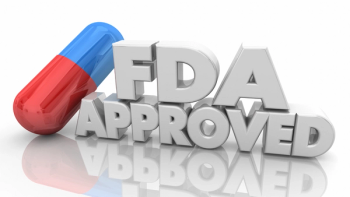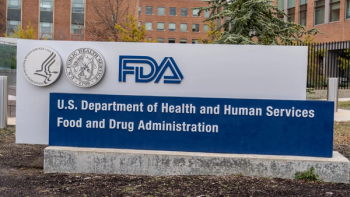
- Pharmaceutical Executive-07-01-2021
- Volume 41
- Issue 7
Navigating PV Divergence: Compliance Tips for New Entrants
With small biotechs facing similar expectations as large pharma in drug safety and pharmacovigilance, despite less resources, identifying the key differences between US and EU requirements can help these companies craft a practical path to multi-region compliance.
For young, ambitious biotechnology companies, pharmacovigilance (PV) demands could easily present a barrier to international success, unless they can devise optimum strategies for fulfilling the differing safety demands of respective regulators. That’s because the PV burden is the same for companies large and small, irrespective of their relative resources. After all, patient safety is paramount—especially at the cutting edge of life sciences. So, where to begin?
Companies with global ambitions tend to favor filing product submissions in the US before tackling Europe with its multiple jurisdictions. On top of the US market’s vast size, it benefits from being a single country governed by one main agency—FDA.
In Europe, drug marketing authorization can take much longer because beyond the central European Medicines Agency (EMA) each EU member state has its own unique requirements to navigate.
Taking the US and EU as key territories, the diverse PV requirements highlighted ahead give a flavor of just what’s involved and where biotechs are likely to need selective support
Pre-market PV considerations
Although in the pre-marketing stage of development, most PV requirements are harmonized across the European and US markets, there are some small, noteworthy variations—for instance, FDA’s particular requirements around causality assessment, affecting what’s submitted in the two regions.
Even at a central level, EMA submissions have a different look and format to US dossiers, so require different handling. For example, the Summary of Product Characteristics (SmPC), and labeling in relation to side effects, are not presented in the same way in Europe.
Differences exist too between the risk management approaches—FDA’s Risk Evaluation and Mitigation Strategies (REMS) versus EMA’s Risk Management Plan (RMP)—and one cannot be substituted for the other. Failure to factor in these differences could present an issue at the time of filing. In addition, national EU-specific requirements may be requested in certain countries, on top of the RMP EU requirements, even for centralized procedures.
To successfully and efficiently navigate the differences between regions, biotech organizations must set out a clear strategy and timeline for how they will file to their target markets, and plan for multiple markets concurrently (it could take a long time to prepare for EMA’s diverse requirements—and those of each EU country beyond that, plus the UK, which now sits outside of the EU/EMA).
It isn’t just European information and formatting requirements that differ and are more involved than in the US. Standard operating procedures (SOPs)/process requirements can be more complex in Europe too. Although, during the pandemic, “crisis mode” enabled emergency acceleration of these processes to expedite the marketing authorization of vital products such as the US-originating Moderna vaccine for use in European markets; this approval was “conditional” and such measures are temporary and cannot be expected going forward.
Real-world reporting
The post-marketing regulatory environment is highly regulated and inspection-driven, and it is here that biotechs are likely to find the greatest challenges in managing their PV obligations. Here, the differences between US and European requirements are starker.
Europe overhauled its post-marketing PV requirements a couple of decades ago, making these very clear and prescriptive. For post-marketing safety studies, for instance, it has broken down the requirements for interventional versus non-interventional studies and what needs to be reported—or left out—for each. In the US, equivalent post-marketing safety requirements are much older and leave much to interpretation, so companies tend to tread a more cautious path.
Where Europe is content with a final study report, in the US companies still file expedited single-case reports (in the EU, expedited reporting is required for Individual Case Safety Report (ICSRs) for post-marketing safety studies). If studies are used to support a product claim, and the right data hasn’t been collected in the right way for the given market, this could pose problems. So the different requirements must be well-understood and designed into post-marketing and market research studies.
Plugging skills gaps
Although biotechs may lead the way with product expertise, this is not typically matched in understanding and expertise in PV requirements and process rigor. To mitigate safety compliance related risk, emerging life sciences organizations need to establish both the right knowledge and experience, plus skills in writing SOPs and setting up PV systems which, in Europe, must be in place from the time of marketing authorization filing.
Relying on a third-party safety services provider to take on this burden without in-house oversight is not recommended—not least because the marketing authorization holder retains ultimate responsibility for PV compliance. Irrespective of a biotech company’s size and scale, then, it will need to bring in someone experienced who understands PV and can keep a check on vendor quality.
In Europe, a nominated qualified person responsible for PV (QPPV) is personally responsible for the safety of the human pharmaceutical products marketed by that company in the EU. There will need to be a designated person inside each region, too: so a US company with European marketing authorization must have a named QPPV based in Europe; and potentially also at a country-level (in France and Spain this is a regulatory requirement).
Who’s responsible?
Where biotechs have entered into distribution relationships with other marketing authorization holders, there will be additional considerations—such as who will coordinate and be responsible for the PV requirements in a given market and how this will be written in any contracts. The marketing authorization holder in the local country always is ultimately responsible for meeting PV requirements in that country. There is also the decision of who will be the global PV database holder (usually the company that developed the product and secured approval).
PV capabilities shouldn’t stand still, either.
Emerging biopharma organizations will need to keep pace with both changes to regulatory requirements across all markets globally, and evolving channels and technologies when tracking safety signals. Companies have an obligation to monitor and filter web/social media forums for potentially important real-world safety information, where digital media is company-sponsored.
The increase in combination treatments involving drugs and devices, for instance, may trigger new rules clarifying how responsibility for adverse drug reactions is apportioned, another situation that needs to be tracked.
Setting aside an appropriate PV budget, and taking a strategic approach to filling gaps in capability, are essential steps for any biotech with global ambitions.
Judith M. Sills, PharmD, Eric Caugant, PhD; both pharmaceutical industry and pharmacovigilance veterans, and Advisors to Arriello
Articles in this issue
over 4 years ago
The Diversity Mindset: Benefits of Tapping External Sourcesover 4 years ago
Firsthand Views: Latinos in Pharmaover 4 years ago
Building Belonging: Pharma’s New Focus in DE&Iover 4 years ago
Today’s Accelerated Pace of Innovation: Can We Afford It?over 4 years ago
The Data Challenge in Rare Diseases and Complex Therapiesover 4 years ago
The Advantages of Stepping Back to Let Others Step Upover 4 years ago
COVID Blame Games Give Way to Lesson Learningover 4 years ago
Biden Budget ‘Wish List’ Maps FDA, Healthcare Prioritiesover 4 years ago
Pharm Exec at 40 (2000-2002)over 4 years ago
Opposing Short-TermismNewsletter
Lead with insight with the Pharmaceutical Executive newsletter, featuring strategic analysis, leadership trends, and market intelligence for biopharma decision-makers.




